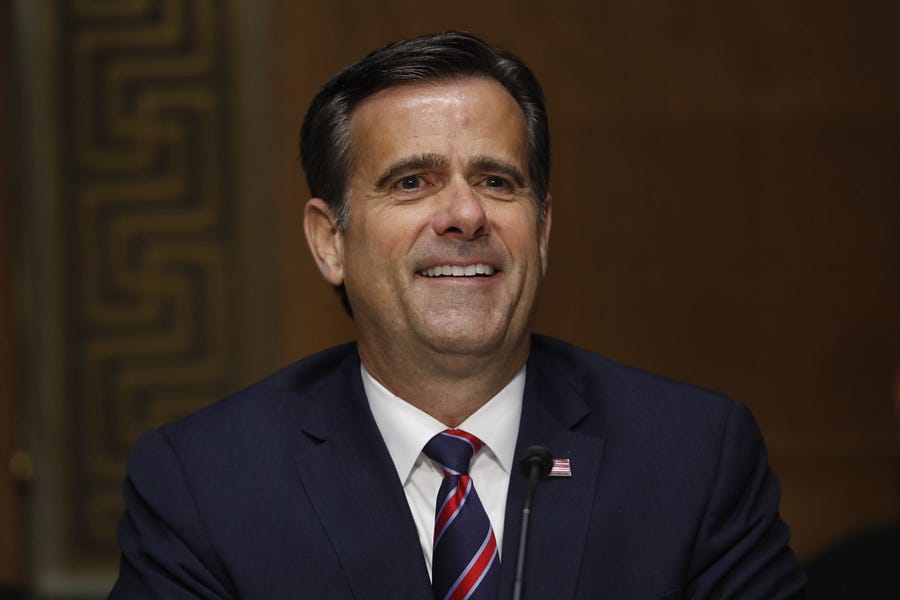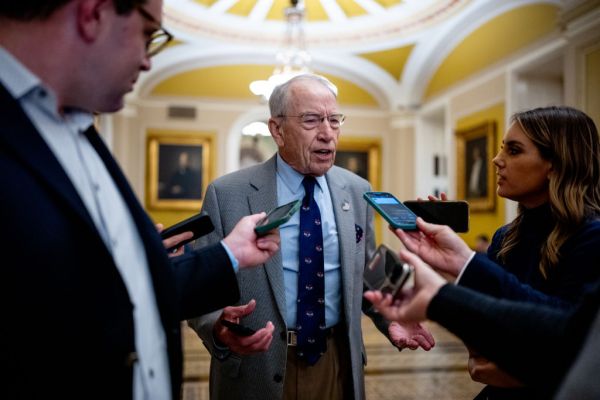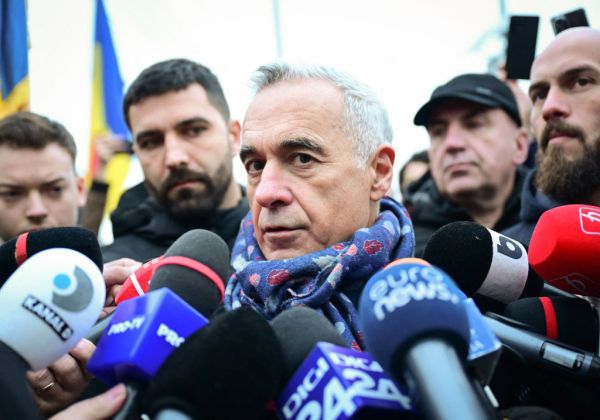Carved into the wall at the entrance of the CIA headquarters is the biblical verse, “And ye shall know the truth and the truth shall make you free” (John 8:32). It’s the polite, civilized version of the view within the CIA and the U.S. intelligence community that their job is “telling truth to power”—where they have the facts and the political types are officials whose ideological and bureaucratic biases stand in the way of sound statecraft.
If only.
It is not often that intelligence is so clear as to be undeniably true. While U.S. intelligence can rightly claim over the years to have produced intelligence that was critical to military and political leaders’ ability to carry out policies successfully, it is no less true that the history of American intelligence is filled with analytic misfires and outright failures that were no less important. That’s not a moral failure on the part of the IC; rather, it’s just recognition that intelligence work is a difficult business. So, a thoughtful skepticism on the part of senior and experienced policymakers toward whatever the intelligence community is saying is not only normal but should be expected if the policymaker is doing his or her job properly.
On the other hand, the higher up policymakers are, the more likely they are to be flooded with information of all kinds, constraints on their time, and an interest in seeing this or that policy they have fought for succeed. Pushing forward information that is soundly sourced but that might rain on his or her parade is no less important if the goal is effective policymaking and responsible statecraft. In other words, the intelligence-policymaker nexus is not some simple “in-box” and “out-box” structure, but rather, if properly understood, a more complex system of give and take that requires an honest appreciation on both ends of the limits of their arts.
Today, that system appears broken.
Last Friday, the New York Times reported on a recently produced memo by the National Intelligence Council, the IC’s most senior analytic body, that summarized the community’s views regarding the possibility that Russia’s military intelligence arm, the GRU, was putting bounties on the heads of the American troops in Afghanistan. As reported, this “Sense of the Community Memorandum”—shorter than three pages—has the CIA and the National Counterterrorism Center judging the intelligence conclusion as plausible and credibly sourced based principally on the debriefs of captured Taliban fighters, knowledge of recent increased Russian support for the Taliban, a meeting between GRU officers and Taliban operatives, and the transfer of money from a GRU account to a Taliban-associated network. The memo also notes that the National Security Agency has less confidence about the assessment, tied to the fact that it had no intercepts of the actual conversations between the Taliban and the Russians. Similarly, the memo says the Defense Intelligence Agency lacked intelligence directly tying the GRU operation to higher-ups in the Kremlin.
Normally, one would conclude that the evidence about GRU bounties is about as good as one might expect. Not 100 percent certainty but, if one were a betting man, really good odds that the reporting is accurate—in any case, certainly enough to be front and center of any policy discussion at the NSC about US-Russian relations. The fact that the NSA doesn’t have an intercept about the talks between Taliban operatives and the GRU officers is hardly surprising given the security that the Russians would have put into such a meeting. And the fact that the DIA doesn’t have intelligence linking the Kremlin to this effort is even less of a surprise. Putin can be overtly blunt when he wants to signal Russian power, but the former KGB officer certainly knows how to keep his John Hancock off operational directives when called for.
The problem in this instance is the timing of the memo and, if the reporting is accurate, the highlighting of would-be intelligence gaps. Since the GRU activity was reported in the President’s Daily Brief (PDB) in late February, the intelligence community would have already gone through the exercise of discussing what it knew, what it surmised, and what it didn’t know for a fact. You don’t just stick in any random report of this sort in the PDB without it being vetted first. And, indeed, it seems likely that the report would not have been put in the PDB if a real, continuing disagreement between NSA and CIA about the bounties existed. It’s hard not to think that the more likely reason for the memo being drafted now would be to give the White House the opening to say that there isn’t a consensus among intelligence officials about the GRU paying bounties or that there is no direct evidence. The caveats by the NSA and DIA are important to note, but by no means should they be seen as substantive rebuttals to what is almost certainly the case—the GRU has been paying Taliban insurgents to kill Americans.
One’s suspicions about the memo’s intent are compounded by the fact that the new head of the intelligence community, and the NIC’s boss, is John Ratcliffe, the former congressman from Texas and a Trump ally. It’s undeniably the case that Ratcliffe got the job because he’s trusted by the president politically, and not because of his expertise in intelligence. This might not be all that unusual except that he took the appointment after Dan Coats had stepped down as director of national intelligence precisely because of cumulative disagreements with the president about intelligence, and after Trump loyalist Ric Grenell had stepped in as acting DNI and immediately began to push senior officials in the organization out the door.
It’s been widely reported that the president doesn’t typically read the intelligence handed him and that, even then, the President’s Daily Brief is, according to the Washington Post, “often structured to avoid upsetting him.” Tailoring intelligence or tailoring how it’s presented, especially of the sort tied to this matter, is an abdication of the intelligence community’s professional responsibility. The memo, intentionally or not, is an open invitation to the president to dismiss as “fake news” the Russian play here. That said, as problematic as the behavior of the IC might be in this instance or more generally when dealing with the president, the root of the problem is a president, who even before entering the Oval Office, made clear that his anger with U.S. intelligence’s reporting on Russian interference in the 2016 election would not lead to an informed skepticism on his part but the wholesale disregard for any information that complicated his days.
America’s security environment is as complex and dangerous as anytime since the end of the Cold War. Having such serious dysfunction at the heart of the national security apparatus only compounds the hazards the nation faces.
Gary Schmitt is a resident scholar in strategic studies and American institutions at the American Enterprise Institute. He was a staff director for the Senate Intelligence committee, and he’s been a consultant to the Office of the Secretary of Defense, and executive director of the Project for the New American Century. He’s held fellowships at the Brookings Institution and the Consortium for the Study of Intelligence.
Photograph by Andrew Harnik/Getty Images.








Please note that we at The Dispatch hold ourselves, our work, and our commenters to a higher standard than other places on the internet. We welcome comments that foster genuine debate or discussion—including comments critical of us or our work—but responses that include ad hominem attacks on fellow Dispatch members or are intended to stoke fear and anger may be moderated.
You are currently using a limited time guest pass and do not have access to commenting. Consider subscribing to join the conversation.
With your membership, you only have the ability to comment on The Morning Dispatch articles. Consider upgrading to join the conversation everywhere.